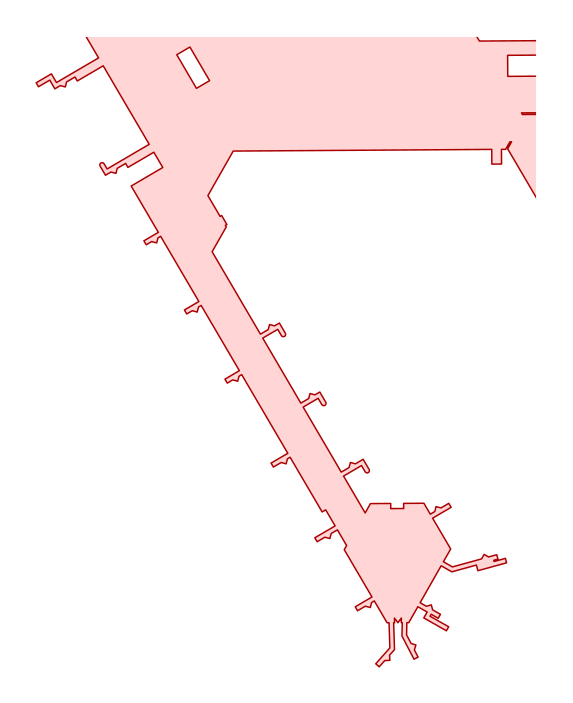
I’ve had an issue with certain airports equipped to handle large quantities of large aircraft—in many cases, the jet bridges are not connected directly to the terminal structure, but instead are connected to immovable “fingers” extending from the structure. These fingers allow the aircraft to be further from the terminal, and support using multiple jet bridges for faster loading and unloading of very large aircraft.
As I discovered when I created my terminal silhouette for Vancouver, it’s not immediately clear whether the fingers should be considered part of the jet bridge (and should therefore be omitted from the drawing) or part of the terminal (and should therefore be included in the drawing).
Tokyo Narita has similar fingers in both Terminals 1 and 2, and I debated for a while whether or not I should include them, and even started drawing them:

Fingers on part of Terminal 1.
Ultimately, though, the terminal silhouettes are an aesthetic representation of an airport, and I liked the simplified, fingerless version of Narita better. I decided to learn from my Vancouver silhouette, and drew Narita without the fingers.
Beyond that, my other decisions were what buildings to include in the drawing at all. Satellite maps of NRT seem to show an airside connector of Terminals 2 and 3; however, airport maps (and my recollection of Terminal 2) seem to indicate that this hallway is not available for the traveling public, so I ultimately decided to exclude it. Likewise, there were a few buildings touching the southeast side of Terminal 2 which appeared to be purely administrative; since they were self-contained structures that weren’t deeply integrated with the terminal, I left them out as well.
Paul Bogard created these terminal silhouette illustrations, and has made them available for use under a CC BY-SA 4.0 License.